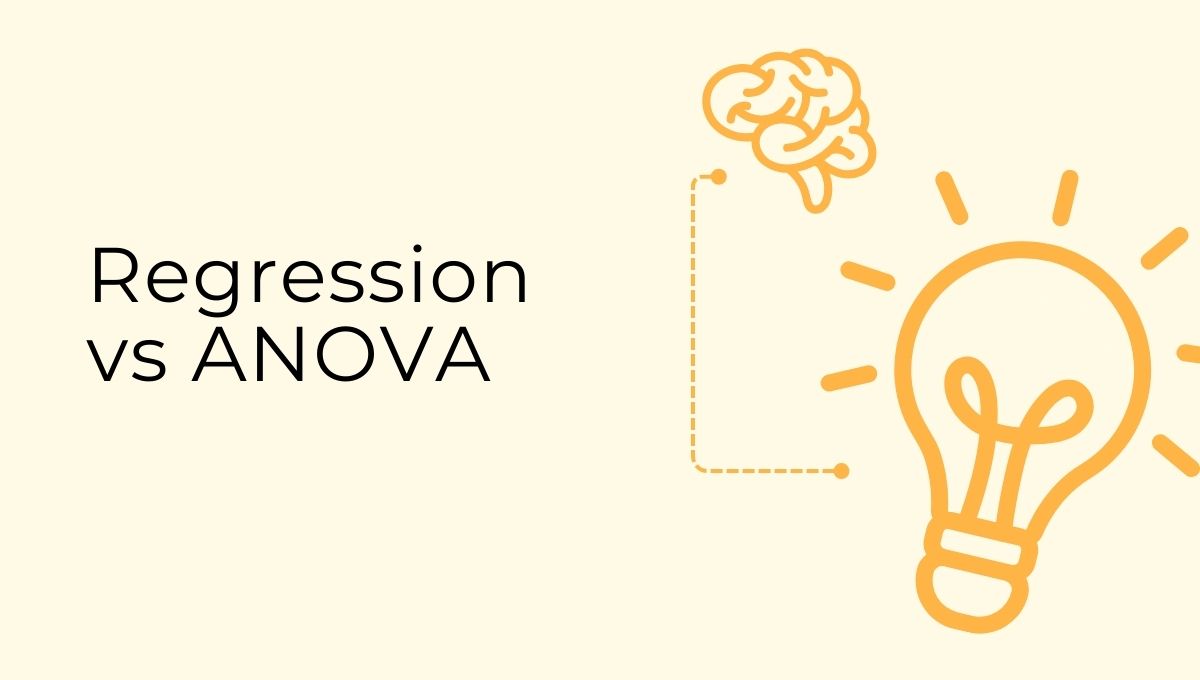Last updated on January 27th, 2025 at 09:25 am
Data drives modern supply chains. From forecasting demand to optimizing logistics, supply chain professionals depend on statistical tools for making data-driven decisions. Among these techniques, the Regression Analysis and ANOVA often take to the limelight. What is that now? Which one should you use where over the other? Let’s break down these concepts in a clear, helpful and to-the-point manner for supply chain professionals like you.
What is Regression Analysis?
Regression Analysis is a statistical technique applied to analyze the relationship among variables. It predicts the changes in a dependent variable such as demand due to the influence of one or more independent variables such as seasonality, marketing spends, or supply chain disruptions.
Regression Analysis can be of prime importance in supply chain management for:
✅ Demand Forecasting: Predicting future demand by relying on historical data.
✅ Cost Optimization: Consideration of how transport or raw material prices would go on to affect costs generally.
✅ Inventory Management: Determining ideal amounts of inventory to keep up with sales trends.
Types of Regression Analysis
Regression Analysis exists in many flavours, depending on how complicated the relationship between variables may be:
Linear Regression: Analysing a straight-line relationship between the variables. For instance, advertising spending and monthly sales.
Multiple Regression: Uses more than one independent variable to forecast a dependent variable, like the effect of temperature, promotions, and holidays on demand.
Logistic Regression: Applied if the dependent variable is classified, such as predicting if a shipment will arrive within the time (Yes/No).
What is ANOVA in Statistics?
ANOVA is actually used for the comparison of three or more groups regarding if they are significantly different using a statistical method; otherwise, it differs from regression analysis since regression analyzes mainly on relationships, and on the other hand, ANOVA identifies variations.
For example, a supply chain professional might use ANOVA to evaluate:
✅ Supplier Performance: Comparing delivery times across multiple suppliers.
✅ Process Improvements: Testing different manufacturing methods to determine which yields the best output.
✅ Regional Analysis: Assessing sales performance across regions to identify significant differences.
Difference Between Regression and ANOVA
Understanding the difference between Regression and ANOVA is critical when choosing the right tool for your analysis:
| Aspect | Regression Analysis | ANOVA |
| Objective | Predicts relationships between variables. | Compares means across groups. |
| Output | Equation showing dependency between variables. | Statistical significance of group means. |
| Application | Used for forecasting and predicting outcomes. | Used for comparing variations. |
| Supply Chain Use | Demand forecasting, cost optimization. | Supplier performance, process evaluation. |
In short, use Regression Analysis when predicting trends or relationships, and rely on ANOVA when comparing categories or groups.
How Do These Techniques Apply to Supply Chain?
Both Regression and ANOVA have distinct but complementary roles in supply chain management:
Regression Analysis Applications
- Transportation Costs: Identify how fuel prices impact logistics costs over time.
- Sales Forecasting: Predict future sales volumes based on promotions and market conditions.
- Supplier Evaluation: Understand how supplier reliability affects inventory turnover.
ANOVA Applications
- Supplier Performance Evaluation: Compare the mean delivery times of different suppliers to choose the most reliable one.
- Regional Demand Analysis: Identify significant differences in demand across various regions.
- Product Testing: Assess customer satisfaction scores for different product variants.
When to Use Regression Analysis vs ANOVA
It’s not always a question of one vs the other; sometimes, these tools work hand in hand. Here’s a quick guide:
- Use Regression Analysis when your goal is to predict or understand relationships.
- Use ANOVA when you need to compare group performances or test hypotheses.
For example, if you’re evaluating the effectiveness of three shipping methods (group comparison), start with ANOVA. If you then want to predict shipping costs based on distance (relationship analysis), shift to Regression Analysis.
Why Should Supply Chain Professionals Master These Tools?
In a rapidly evolving industry, understanding data is non-negotiable. Knowledge of statistical techniques like Regression Analysis and ANOVA can set you apart by enabling data-driven decision-making. Whether you’re optimizing costs, forecasting demand, or managing inventory, these tools empower you to:
✅ Make Accurate Predictions: Anticipate market trends and adapt strategies.
✅ Test Hypotheses: Back decisions with statistical confidence.
✅ Maximize Efficiency: Identify areas of improvement to streamline operations.
Upskilling through a Supply Chain Course can deepen your understanding of these tools, ensuring you’re equipped to tackle real-world challenges.
FAQs
- What do you mean by Regression Analysis in Supply Chain Management?
Regression analysis predicts demand, cost, and inventory level based on seasonality, economic trends, or supplier reliability.
- What is ANOVA in Statistical Terms?
ANOVA is a statistical method of comparing two or more sample means against each other in order to recognize which differ significantly.
- What is the main difference between Regression and ANOVA?
The main difference lies in their objectives: Regression Analysis predicts relationships between variables, while ANOVA compares group means to detect significant differences.
- Can Regression and ANOVA be used together?
Yes, these techniques can complement each other. ANOVA can identify differences between groups, and Regression can explore the relationships driving those differences.
- Are these tools covered in supply chain courses?
Absolutely. Many supply chain courses delve into statistical tools like Regression and ANOVA to equip professionals with practical analytical skills.
Final Thoughts
Understand the difference between Regression and ANOVA; then whether you analyze suppliers’ performance or forecast demand, it becomes necessary. It is not just for academics; it is a practical tool and solution for everyday problems faced in supply chain management. Better knowledge of these two concepts helps you to easily optimize your processes, cut costs, and ramp up efficiency.
A Supply Chain Course that provides hands-on education in these tools will be a good step toward making your insider knowledge even greater. Data-driven decisions are the future of supply chain management–make sure you’re ready!

